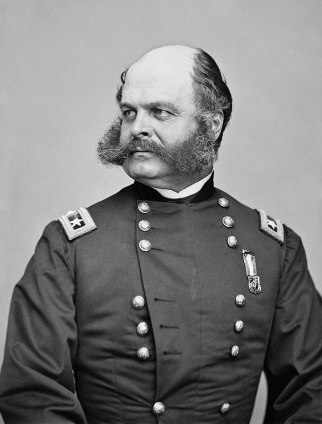Word Nerd

I’m not enough of a word nerd to sit around reading the dictionary in my spare time, but I do love learning the stories behind how certain words came about. As a historical author, there are many times when I will stop in order to look up a word I want to use to ensure it existed in the 1800s. I’ve learned that there are many words that sound vintage that didn’t come into existence until the 1920s or 1950s.
Sometimes these fact-checking missions turn up some interesting word history. I thought I’d share a couple fun ones I discovered this year.
Sideburns
Sideburns were originally called burnsides. This was in honor of American Civil War general Ambrose Burnside who was famous for his facial hairstyle. The term switched the syllables to form “sideburns” later in the 19th century. I guess this made more sense for hair focused on the “side” of one’s face.

Sideburns can stand alone or be joined by a mustache. I have to admit that I find 19th century facial hair quite fascinating. I’m not ready for my husband to attempt to replicate the styles, but I do enjoy working them into my stories every now and again.
Paraphernalia
From Merriam-Webster:
In current use, paraphernalia is typically encountered in its “equipment” sense, but the word hasn’t always been used in that way. Originally, paraphernalia was property that a married woman owned herself—as opposed to her husband’s property or the dowry she brought to the marriage. Paraphernalia came to English, via Medieval Latin, from Greek parapherna, meaning “bride’s property beyond her dowry” (from para-, meaning “beyond,” and phernē, meaning “dowry”).
I found this so interesting.

Do you enjoy learning the history of words?
If you are married, did you bring any paraphernalia to your marriage?
I brought some bedroom furniture and a pile of books. 



